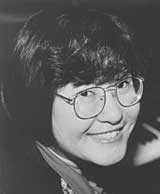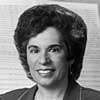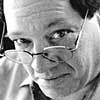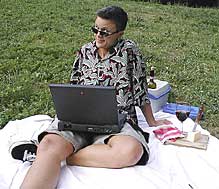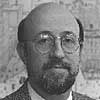
David Nicholls
Photo courtesy David Nicholls |
|
“Defining American Music”
What do we mean by “American music?” From a millennial perspective, the answer is apparently simple: as America’s Music, the Cambridge History of American Music, and The New Grove Dictionary of American Music make manifestly clear, it is synonymous with inclusivity. From Barber to barbershop, Cage to Cajun, and Ruggles to ragtime, it’s all there, reinforcing the contemporary view of American culture as pluralistic and multifaceted. Implicit in this definition, though, is the acknowledgment that “American music” cannot be quantified either stylistically or otherwise; rather than defining some aurally-perceivable nationalistic trait, the term actually identifies “music created by Americans, usually in America.” A century ago, the situation was rather different: there was no clear idea of what “American music” could or should be, let alone what it supposedly was. Indeed, it was only really during the 1930s that this identity crisis began to resolve itself, paradoxically at a time when stereotypical images of “American music” were at their most potent, both in America and elsewhere.
As is well-known, in 1893 Antonín Dvorák opined in the New York Herald that “the future music of this country must be founded upon what are called the Negro melodies . . . These are the folk songs of America, and your composers must turn to them …” i Dvorák subsequently modified his view, suggesting that Native American melodies were also worthy of consideration; and in 1895, in Harper’s New Monthly Magazine, he finally conceded that “the germs for the best in music lie hidden among all the races that are commingled in this great country.” In retrospect, Dvorák’s remarks are noteworthy on three counts: for their ignorance of both earlier and contemporaneous attempts at creating an “American music”; for their failure to understand the profound demographic and socio-cultural differences which existed between America and Europe; and for the fact that they were taken so seriously by so many people. ii
At the end of the nineteenth century, it was perfectly possible for European composers like Dvorák, Grieg, or Tchaikovsky to write genuinely nationalistic music, by integrating into the existing European musical lingua franca the folk music of their compatriots: they spoke a common musical tongue, but with characteristic and identifiable ethnic or regional accents. But in polyglot America no such musico-linguistic purity was possible, except in the most particular circumstances, such as the African American-derived pieces of William Grant Still, or the regionally based compositions of Charles Ives. Any other use of “folk songs” strikes me as disingenuous and appropriative — and I include here not just the obvious Aunt Sallys, such as MacDowell’s Indian Suite or the Alaskan Inuit melodies of Beach’s late String Quartet, but also Still’s Danzas de Panama and Ives’s setting of the spiritual “In the Mornin’.”
Somewhat ironically, just when Dvorák was encouraging American art music composers to borrow freely from African American sources, several interrelated popular music genres (all of which were to some extent intrinsically linked with African American culture) were about to enter the mainstream of American — and subsequently Western — cultural life. The meteoric rise between 1895 and 1925 of ragtime and blues (with their love-child jazz), together with musical theatre and Tin Pan Alley songs, could not have been predicted by Dvorák or anyone else; nor could the extent to which they would be perceived in the public imagination as the only authentic examples of American culture. The degree of their ubiquity by the mid-1920s is easily demonstrated: think of the “Golliwog’s Cake-walk,” La Création du Monde, L’Enfant et les sortilèges, Die Dreigroschenoper or Shostakovich’s “Taiti Trot,” an arrangement of “Tea for Two.” (Incidentally, anyone doubting the threat that ragtime and jazz apparently posed to the European cultural establishment at this time is directed to the outrageously racist remarks contained in part three of Constant Lambert’s Music Ho!. iii)
By the 1930s, a veritable smorgasbord of apparently incompatible musics sought approbation as the authentic voice of America. Apart from the popular music genres mentioned above, there was an assortment of art music contenders. The Second New England School and its descendants had created a substantial body of Eurocentric but often appealing music. Farwell and the other Indianists had taken Dvorák at his word in exploring the rich traditions of Native American music; a smaller number of composers had similarly approached the African American heritage. Copland, like Gershwin, had initially been drawn to a synthesis of jazz and art music, but by 1930 he had moved toward a hard-edged version of the neoclassical internationalism also espoused by a legion of Nadia Boulanger’s other American students. And then there were the self-styled ultra-modernists, with Henry Cowell as high priest, Varèse, Ruggles and Crawford among the communicants, and Ives as recalcitrant patron saint.
Perhaps the greatest myth of American music is the idea that a particular musical sound can somehow encapsulate the aspirations and fundamental character of the nation. Given the bewildering profusion of possibilities, the reality is rather of the pointlessness of attempting to justify a preeminent position for any single composer or genre. Yet for two authors writing in the early 1930s, it was this very multiplicity which was the key issue. Unlike Dvorák and his countless successors, who — in attempting to define American music — sought to privilege one genre, approach, or ethnic music above the others, John Tasker Howard and Henry Cowell adopted the all-embracing, anti-canonical, egalitarian approach customary today. As Cowell noted in the introduction to his 1933 American Composers on American Music, the bibliography of American music was, at the time, scant. Thus both his volume, and Howard’s 1931 Our American Music (which Cowell praised) set an important precedent. iv From them, one can trace a direct line of descent through Gilbert Chase’s 1955 America’s Music, to the more recent histories by Wilfrid Mellers, H. Wiley Hitchcock, Daniel Kingman, Charles Hamm and others.
Our American Music has been criticized for being “too genteel and ‘respectable,'” an “unmethodical, browsing chronicle,” compiled by someone who “fit Sonneck’s description of an American who wrote ‘as a European.'” v Yet for almost a quarter-century, Howard’s book was the only generally available account of American music. Crucially (and very unusually at this period), alongside its predictable chapters on art music stand substantial discussions of “other” American musics — folk, Native American, African American, popular song, and jazz — which occupy approximately a quarter of its pages. Howard’s tone may occasionally be pejorative, particularly in relation to Native Americans, but this was the unfortunate norm of the time and Howard was by no means the only culprit. The important point — one which would not have been lost on the very many readers of its first three editions — is that, in general, Our American Music examines all of its subjects with an admirable degree of dispassionate and scholarly interest.
That is not a comment one could honestly make regarding Cowell’s American Composers on American Music. Designated as a symposium, its tone is inevitably subjective rather then objective, and its overt aim is the promotion of ultra-modern art music. But the book is remarkable for two reasons: first, it includes not only a series of chapters in which composers as different as Howard Hanson and Ruth Crawford are considered by their peers, but also a second group in which general tendencies are examined. Among these we find sensitive and at times provocative statements concerning Latin American musics (Chávez and Caturla), African American composers (Still), oriental influence (Rudhyar), and jazz (Gershwin). Like Howard, Cowell took an unusually ecumenical view of American music.
American Composers on American Music is also remarkable for Cowell’s opinion, fundamentally different from Dvorák’s, that while “Nationalism in music has no purpose as an aim in itself . . . Independence . . . is stronger than imitation . . . [Thus] more national consciousness is a present necessity for American composers . . . When this has been accomplished, self-conscious nationalism will no longer be necessary.” vi Here as elsewhere, Cowell was the first to take his own advice, though one wonders whether he entirely foresaw the result of doing so. Later in 1933, in Modern Music, he argued that composers should “draw on those materials common to the music of all the peoples of the world, to build a new music particularly related to our own century.” vii For the remaining thirty years of his life, Cowell did just that, albeit inconsistently; the most immediate results can be found in a group of 1930s works which are so radical as to appear almost reactionary. “Ostinato Pianissimo,” the “United Quartet,” “Pulse,” and “Return” make extensive use of ostinato patterns; the apparent simplicity of their rhythmic material conceals a surprising degree of sophistication, not least in the relation between surface detail and overall structure. Three of the four pieces are written for percussion and utilize a plethora of unusual instruments, both invented and imported. Pitched material, where it occurs, tends to be consonant but nondiatonic, and includes artificial modes constructed along Asian and African lines. Drone accompaniments are the norm. Cowell’s remarks concerning the “United Quartet” apply to all four pieces: “[their] simplicity is drawn from the whole world, instead of from the European tradition or any other single tradition.” viii
Cowell was not the only American composer of the 1930s to adopt such a stance. Indeed, Harry Partch had, by this time, “tentatively rejected both the intonational system of modern Europe and its concert system.” ix Partch’s major creative accomplishments of the decade — including the Seventeen Lyrics by Li Po and the journal Bitter Music — exemplify his radicalism. Subsequently, he devised a new and comprehensive intonational system, built a unique ensemble of instruments capable of performing in that system, and created an all-embracing aesthetic for his work: corporeality. His frame of cultural reference ranged from hitchhiker inscriptions to Greek tragedy. More recent figures to follow in similar footsteps include Lou Harrison, Peter Garland, La Monte Young, Terry Riley, and — arguably — John Cage.
That Partch, Cowell, and the others just named are American composers is unquestionable; but is their music American? Certainly none of them achieves “Americanness” through the superficial use of “American” ethnic material, by conforming to American generic stereotypes, or through association — retrospective or otherwise — with American subject matter. To my mind, though, their music — and that of many other so-called American experimentalists — is profoundly American, for it possesses at a compositional and aesthetic level the same qualities that were identified earlier in connection with the books by Cowell and Howard: those of inclusivity, open-mindedness, egalitarianism, and (in more technical terms) the hybridic synthesis of disparate elements into a cohesive and coherent whole. Given America’s official motto – “e pluribus unum” — the nation should be deeply proud of this music — but it isn’t. On the contrary, America has often shunned Cowell, Partch, and the other experimentalists I would identify as its most American composers. For while Harris, Sessions and Schuman saw the majority of their symphonies premiered by America’s foremost orchestras and conductors, only a fraction of Cowell’s twenty symphonies were afforded such treatment. Partch received little institutional support, and even in 1966, at the height of his artistic accomplishments, could complain with justifiable bitterness that “I went to the social security offices yesterday, and learned that the $538.20 check from the U.S. Treasurer is valid. It is my reward for having endured this society for 65 years.” x In 1997, Peter Garland moved into self-imposed exile in Mexico, as a result of “the effects of two decades of conservatism [that] have left people like me marginalized, probably permanently.” xi
The problem, I believe, has to do with the continuing dominance of American music and its institutions by outdated Eurocentric attitudes and values, which still equate nationalism with folk music of one sort or another. (And let’s remember that it was Gershwin, on page 187 of American Composers on American Music, who wrote that “Jazz I regard as an American folk-music; not the only one, but a very powerful one.”) These radical composers have failed — literally and metaphorically — to wave the American folk music flag, either at home, or on territory appropriated from others. As a consequence, and like some weird cult, their profound Americanism has moved them beyond nationalism into conflict with the nation.
While the term “American music” — not least as it came to be understood in the 1930s — is of necessity synonymous with inclusivity and plurality, this need not limit its manifestations to an infinite variety of self-contained musics, whose only common point is their creation by Americans, usually in America. For as the work of Cowell, Partch, and their successors demonstrates, it can also define a music so rooted in inclusivity and plurality that it becomes universal rather than national, a music that — as Cowell suggested — is “particularly related to our own century.” That the greatest musical legacy of the most self-consciously nationalistic country in the world should be a music unacceptable to its own musical establishment, is supremely (and tragically) ironic.
[David Nicholls’ essay originally appeared in the Spring 1999 Newsletter of the Institute for Studies in American Music at the Brooklyn College Conservatory of Music (www.brooklyn.cuny.edu/) and is reprinted here with his kind permission and the kind permission of ISAM co-editor Ray Allen.]
- The sources of this and the following quotations are reproduced in John C. Tibbetts, ed., Dvorák in America, 1892-1895 (Portland, OR; Amadeus Press, 1993): 355-84.
- See Arthur Farwell, “Pioneering for American Music,” Modern Music, 12 (1934): 116-22; Adrienne Fried Block, “Boston Talks Back to Dvorák,” I.S.A.M. Newsletter, 18/2 (May 1989): 10-11, 15; Block, “Dvorák’s Long American Reach,” in Dvorák in America: 157-181.
- Constant Lambert, Music Ho! A Study of Music in Decline (London: Faber, 1934).
- Henry Cowell, ed., American Composers on American Music: A Symposium (Stanford: Stanford University Press, 1933; reprint New York: Frederick Ungar, 1962); John Tasker Howard, Our American Music: Three Hundred Years of It (New York: Thomas Y. Crowell, 1931).
- Richard Crawford (quoting Gilbert Chase), “Foreword,” America’s Music: From the Pilgrims to the Present, rev. 3d ed. (Urbana: University of Illinois Press, 1987): xv.
- Henry Cowell, “Trends in American Music,” American Composers on American Music: 13.
- Henry Cowell, “Towards Neo-Primitivism,” Modern Music, 10/3 (1933): 149-53.
- Henry Cowell, [introductory remarks], United Quartet [String Quartet No. 4] (San Francisco: New Music Edition, 1937): [1].
- Harry Partch, Genesis of a Music, 2d ed. enlarged (New York: Da Capo Press, 1979): vi-vii.
- Letter from Harry Partch to Lou Harrison, 23 August 1966, A Lou Harrison Reader, ed. Peter Garland (Santa Fe: Soundings Press, 1987): 60.
- Letter from Peter Garland to David Nicholls, 9 June 1998.




